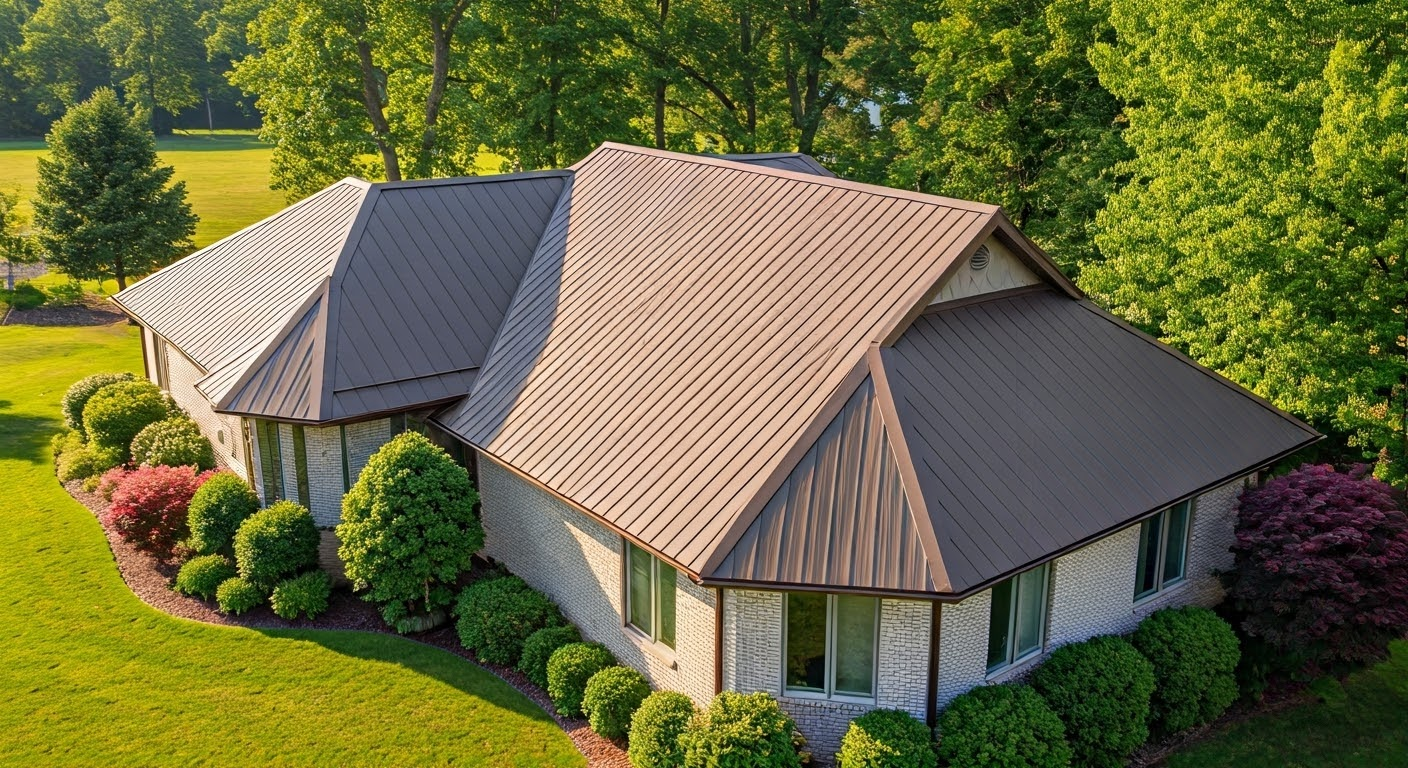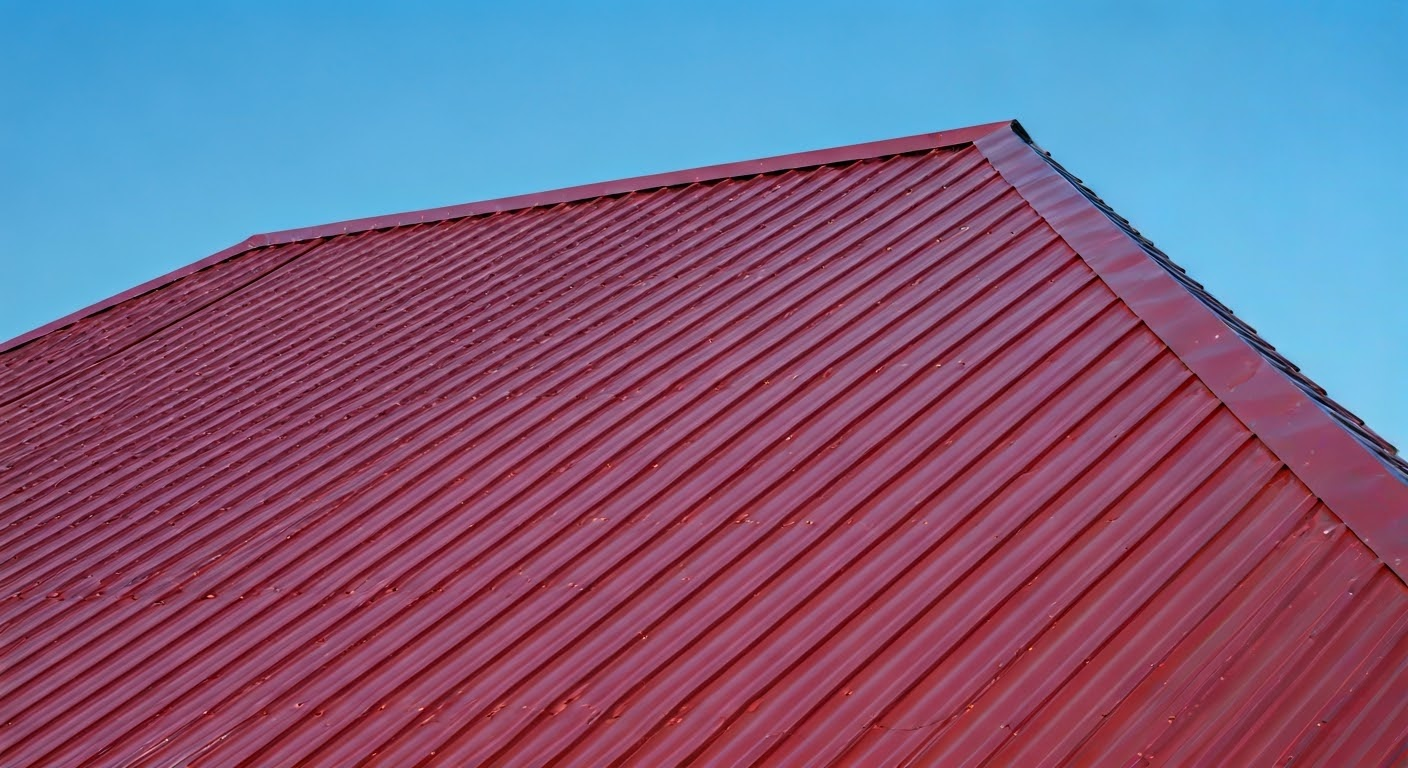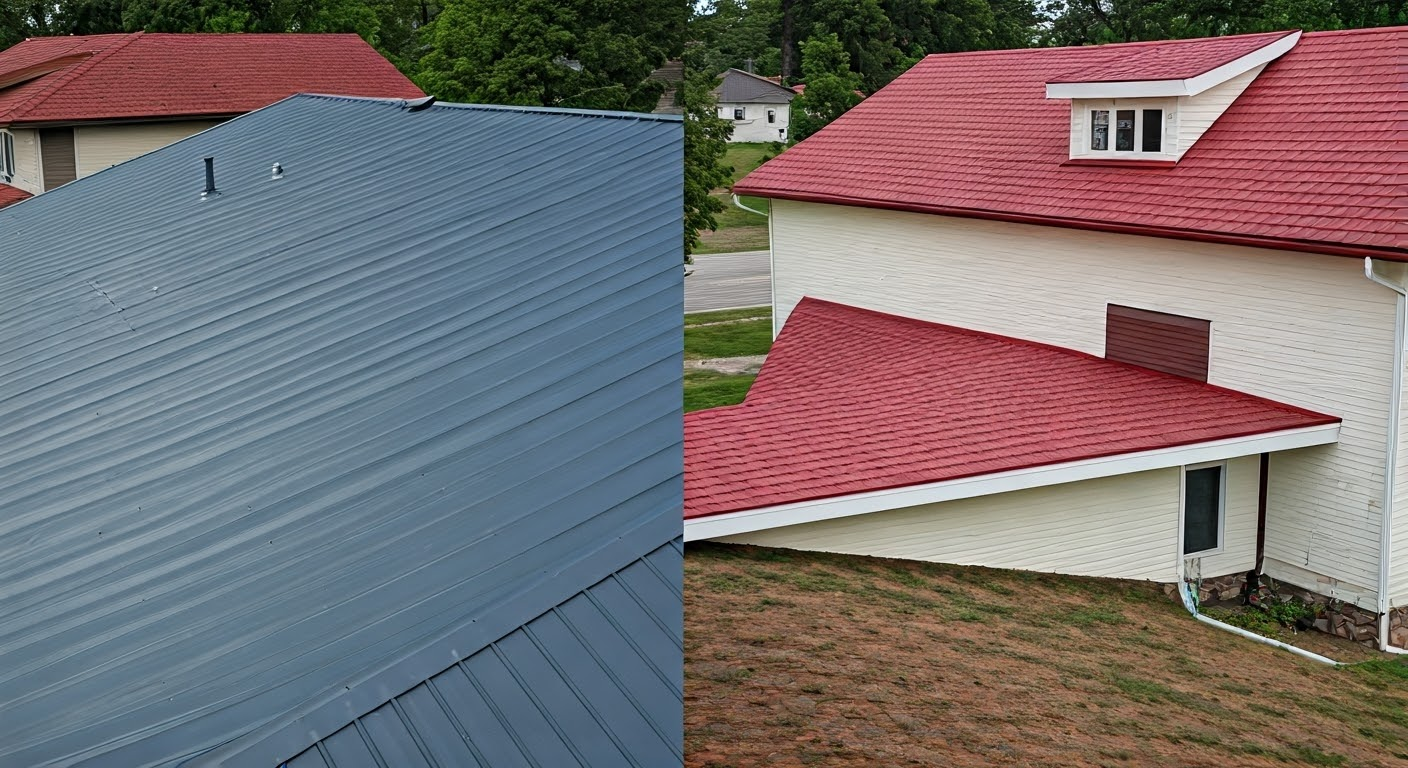
Key Highlights
- Durability: Metal roofs are renowned for their exceptional lifespan, often lasting 40-70 years, far surpassing traditional asphalt shingles.
- Energy Efficiency: Their reflective properties can significantly reduce cooling costs by deflecting solar heat, making them an energy-efficient choice for homeowners.
- Weather Resistance: Metal roofs excel at withstanding harsh weather conditions, including extreme weather,high winds, heavy rain, and even hailstorms, offering superior protection for your home.
- Aesthetic Appeal: Available in a variety of styles, colors, and finishes, metal roofs can complement any home’s design and boost curb appeal.
- Sustainability: Often made from recycled materials and fully recyclable at the end of their life, metal roofs are an environmentally friendly roofing option.
Introduction
When it’s time for a new roof, homeowners are increasingly turning to metal roofing as a durable and stylish alternative to traditional materials. Metal roofing has gained significant popularity in recent years, and for good reason. This comprehensive guide will explore the numerous benefits of metal roofing, compare it to other popular roofing materials, and address common questions homeowners have. By the end, you’ll have the information you need to decide if a metal roof is the right choice for your home.
Benefits of Metal Roofing

One of the most significant advantages of metal roofing is its exceptional durability. Unlike asphalt shingles that require roof replacement every 15-20 years, a well-maintained metal roof can last for 40-70 years or more. This longevity translates into long-term cost savings and a reduced environmental footprint.
Beyond their impressive lifespan, metal roofs offer a host of other benefits, including unmatched energy efficiency. By reflecting solar radiation away from your home, metal roofs can significantly reduce your cooling costs, especially during scorching summer months.
Durability and Longevity of Metal Roofs
The remarkable durability of metal roofs stems from their ability to withstand a wide range of harsh weather conditions. , including a thunderstorm. High winds, often a major concern for homeowners, pose little threat to properly installed metal roofs. Their secure interlocking panels can withstand wind speeds of up to 140 mph or more, providing peace of mind during storms.
Furthermore, metal roofing demonstrates impressive resilience against heavy rain and even hailstorms. Their non-porous surfaces allow for efficient water runoff, minimizing the risk of leaks and water damage that can plague traditional shingles.
Investing in a metal roof equates to investing in robust protection against the elements, ensuring your home remains safe and dry for decades to come.
Energy Efficiency and Cost Savings
Metal roofs are inherently energy-efficient due to their reflective properties. Instead of absorbing heat from the sun like traditional asphalt shingles, metal roofs deflect solar radiation, keeping your attic cooler and reducing the workload on your air conditioning system. This translates to noticeable savings on your energy bills, particularly during hot summer months.
For homeowners seeking to maximize energy efficiency, metal roofs offer excellent compatibility with solar panels. Their durable and long-lasting surfaces provide an ideal platform for solar panel installation, allowing you to harness clean, renewable energy and potentially offset your energy costs even further.
By choosing a metal roof, you’re not only making a smart investment for your wallet but also contributing to a more sustainable future.
Aesthetic Appeal and Variety
Gone are the days when metal roofs were limited to simple, utilitarian designs. Today’s metal roofing options offer an impressive variety of colors, styles, and finishes to enhance your home’s curb appeal. From classic profiles that mimic traditional shingles to sleek, modern designs, there’s a metal roof style to suit every architectural taste.
Whether you prefer bold hues to make a statement or subtle shades to blend seamlessly with your surroundings, the extensive color palette of metal roofing ensures a perfect match for your exterior paint color and overall home design.
With such diverse options, you can easily find a metal roof that complements your personal style and elevates the architectural beauty of your home.
Comparing Metal Roofs with Other Roofing Materials

While metal roofing offers numerous advantages, it’s essential to compare it to other popular roofing materials to make an informed decision for your home. Let’s examine the key differences between metal roofs and two common alternatives: asphalt shingles and clay tiles.
Understanding the pros and cons of each material will help you determine which best aligns with your budget, desired aesthetic, and long-term roofing goals.
Metal Roofs vs. Asphalt Shingles
Asphalt shingles have long been the go-to roofing choice for many homeowners due to their affordability and ease of installation. However, when compared to metal roofing, traditional asphalt shingles fall short in terms of longevity, durability, and energy efficiency.
Here’s a quick comparison:
| Feature | Metal Roofing | Asphalt Shingles |
|---|---|---|
| Lifespan | 40-70 years+ | 15-20 years |
| Durability | Highly durable; resistant to wind, hail | Prone to damage from wind, hail |
| Energy Efficiency | Reflects solar heat; lowers cooling costs | Absorbs heat; less energy-efficient |
| Cost | Higher upfront cost | Lower upfront cost |
As evident from the table, while asphalt shingles have a lower initial cost, metal roofing offers a significantly longer lifespan, increased durability, and superior energy efficiency, making it a more cost-effective choice over time.
Metal Roofs vs. Clay Tiles
Clay tiles, like slate, are another traditional roofing material known for their aesthetic appeal and longevity. While clay tiles can last for several decades, they are considerably heavier than metal roofing and require a more robust support structure, often increasing installation costs.
Metal roofs, on the other hand, are much lighter and easier to install, requiring less structural reinforcement. Furthermore, metal roofing offers greater resistance to impact damage from hail or fallen debris, a common concern with clay tiles.
While both materials have their merits, metal roofing generally provides a more practical and cost-effective balance of durability, aesthetics, and ease of installation.
Installation and Maintenance of Metal Roofs
Proper installation is crucial to ensure the longevity and performance of your metal roof. It’s essential to hire experienced roofers with a proven track record in metal roofing installation. They possess the specialized skills and knowledge to properly handle the materials and ensure a watertight, long-lasting result.
While metal roofs are renowned for their low maintenance requirements, periodic inspections and basic care are still essential to maximize their lifespan.
Professional Installation Process
When it comes to metal roof installation, enlisting the expertise of professional roofers is paramount. Experienced professionals understand the unique requirements of different metal roofing systems, ensuring a precise and secure fit. They have the necessary tools and equipment to handle the large panels or tiles safely and efficiently.
During the installation process, skilled roofers pay meticulous attention to detail, ensuring proper sealing of all seams and flashing points to prevent leaks. They also ensure adequate ventilation to minimize condensation buildup, which can compromise the roof’s performance over time.
By entrusting your metal roof installation to qualified professionals, you’re ensuring a durable, weathertight, and aesthetically pleasing roof that will protect your home for decades to come.
Maintenance Tips for Longevity
While metal roofs require minimal upkeep compared to other roofing materials, proper maintenance practices are crucial for maximizing their longevity and minimizing the risk of damage. One essential tip is to schedule annual inspections, preferably after winter or periods of severe weather, to check for any loose panels, damaged flashing, or debris buildup.
Keeping your gutters clean is another important aspect of metal roof maintenance. Clogged gutters can obstruct water flow, leading to potential leaks and water damage. Regularly removing leaves, twigs, and other debris prevents these issues and extends the life of your roof.
With minimal effort and these simple maintenance practices, you can enjoy the long-lasting beauty and protection of your metal roof for years to come.
Conclusion
In conclusion, metal roofs have become increasingly popular due to their exceptional durability, energy efficiency, cost savings, aesthetic appeal, and variety. When comparing them to traditional roofing materials like asphalt shingles and clay tiles, metal roofs stand out for their longevity and low maintenance requirements. Professional installation and proper maintenance are key factors in ensuring the longevity of metal roofs. If you are considering a roof upgrade, metal roofing could be a durable and cost-effective option that adds value to your property. Explore the benefits of metal roofs further by checking out our FAQ section or contact us for more information.
At Metal Roof Mobile AL, we ensure our clients receive the best possible outcomes. Our commitment to quality workmanship and customer satisfaction is unwavering, making us the top choice for residential Roofing services in our community.
Frequently Asked Questions
What makes metal roofs a popular choice in the US?
Metal roofs have become an attractive option in the residential roofing market due to their unmatched durability and energy efficiency. Homeowners are drawn to their long lifespan, potential for energy cost savings, and enhanced protection from the elements.
How long can a metal roof last compared to traditional materials?
The longevity of metal roofs far surpasses traditional roofing materials. While asphalt shingles last 15-20 years, metal roofs can last 40-70 years or more with minimal maintenance, making them a worthwhile investment despite higher initial costs.
Are there any special considerations for installing metal roofs in coastal areas?
In coastal areas prone to severe weather conditions and salt spray, choosing corrosion-resistant metals like aluminum or zinc-coated steel is essential. Proper installation and coatings help mitigate the risk of rust and damage from high winds and salty air.
